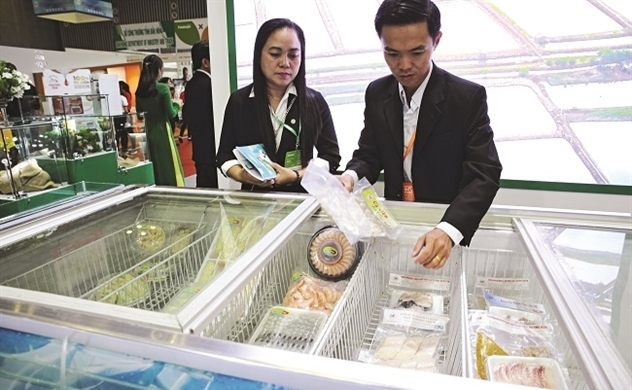Fast food and sandwiches with vegetables and fruits which can retain vitamins and minerals utilizing freeze dried technology are favored by young consumers.

As the consumption of this kind of food is increasing rapidly, the industry has witnessed an average growth rate of 3.58 percent per annum. 14.2 million tons of food were consumed in 2012, while the figure soared to 17.49 million tons in 2018 and 18.26 million in 2019.
The coronavirus outbreak has hit the Chinese economy hard. The Chinese government stated that the food reserves are enough to supply to the whole country. However, the short supply is unavoidable in the context of production suspension and travel restrictions.
| As the consumption of this kind of food is increasing rapidly, the industry has witnessed an average growth rate of 3.58 percent per annum. 14.2 million tons of food were consumed in 2012, while the figure soared to 17.49 million tons in 2018 and 18.26 million in 2019. |
Nguyen Hoai Nam, deputy secretary general of the Vietnam Association of Seafood Exporters and Producers (VASEP), said during and after the epidemic many consumers tend to favor canned and frozen food rather than fresh food.
The association has advised its member companies to step up the production of processed food.
“Enterprises have been advised to prepare products for the next three to five months as the demand from China will be high,” Nam said.
However, a question has been raised whether Vietnamese enterprises are capable of grabbing this opportunity.
A report from the Chinese customs agency showed that in 2017-2019, food imports were mostly from Europe, the US, New Zealand, Indonesia and Canada. Vietnam’s products just accounted for 2.5 percent of total food import value.
At first, Chinese agencies announced that it would open border gates on February 9, but later decided to delay the opening by 20 days. As a result, Vietnam’s enterprises which supply fresh farm and seafood products have had to shift to process products as a short-term solution to improve farm produce value.
What is happening in China has prompted the countries that export foods to seek new markets, and Vietnam is a potential market.
A report from Datamonitor in mid-2019 showed that Vietnam’s processed food market has been witnessing attractive growth rates over the last few years.
This explains why more foreign food processors have bought shares of Vietnam’s enterprises. South Korean CJ Group acquired 65 percent of Minh Dat Food’s shares and 47.33 percent of Cau Tre. Meanwhile, Earth Chemical from Japan took over A My Gia and Daesang from South Korea took over Duc Viet Food.
Experts predict that if the Chinese market continues to close, foreign-made food will enter the Vietnamese market. However Vietnam’s farm produce capability is still low.
Kim Chi

EVFTA brings opportunities to escape reliance on Chinese market
The next-generation FTA with the EU is believed to pave the way for Vietnam to diversify export markets and ease reliance on China.

The competition in the drinks and snacks market
Reports all show the great potential of the Vietnamese drinks and snacks market.
 The Covid-19 crisis, which has paralyzed many factories in China, offers an opportunity for Vietnam’s processed food to penetrate the 1.4 billion consumer market.
The Covid-19 crisis, which has paralyzed many factories in China, offers an opportunity for Vietnam’s processed food to penetrate the 1.4 billion consumer market.